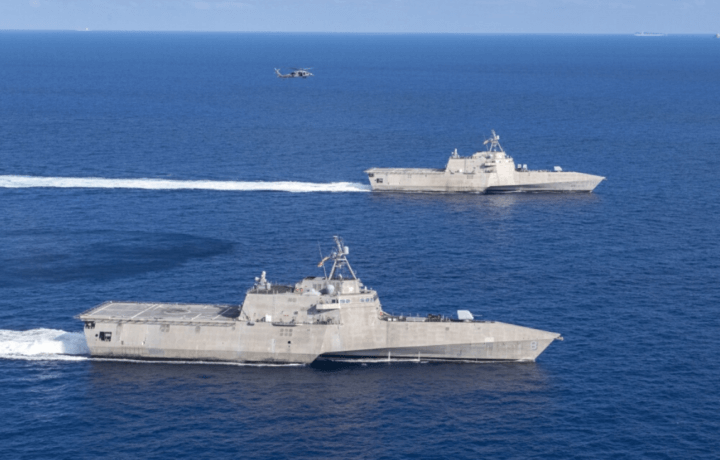Earlier this month, the United States Department of Defense (DoD) announced that defense primes Lockheed Martin and General Dynamics had each been awarded multi-million-dollar contracts to sustain the twin-variant Littoral Combat Ship (LCS) program. The combined value of the contracts was reported to be in excess of $129 million.
Both contracts are expected to be completed by next August, with the United States Naval Sea Systems command acting as the contracting authority. What is notable about this contract is that the U.S. Navy doesn’t actually want to keep the ships in service, and has sought to remove a significant portion of the LCS fleet in recent years.
Retiring the LCS While More Are Still to Come
It was less than a month ago that the USS Sioux City (LCS-11), a Freedom-variant littoral combat ship, was decommissioned in Mayport, FL – although the vessel had only been commissioned into service with the U.S. Navy in November 2018. USS Sioux City is just the latest LCS vessel to have its career cut short – at least two decades shorter than was initially expected.
It was two years ago that the United States Navy decommissioned the USS Independence (LCS-2) with little fanfare in a pier-side ceremony in San Diego. The namesake of the U.S. Navy’s Independence-class of LCS left the fleet after just 11 years in service, far shorter than the expected 25-year lifespan the Navy had envisioned for the fast-moving warships that were designed to operate close to shores. USS Freedom (LCS-1) was also decommissioned in September 2021.
A Hole in the Water?
The LCS program began when the U.S. military was engaged in the Global War on Terror (GWOT) following the September 11, 2001 attacks. The LCS was seen as ideal for combating missile-firing boats, and even small submarines, while it was envisioned that the stealthy surface combatants could be capable of defeating anti-access and asymmetric threats in littoral or near-shore waters.
What was unique about the LCS was that the Navy opted for two unique classes of vessels – each slightly smaller than the Oliver Hazard Perry-class frigate. The first was the Freedom-class, which was designed by Lockheed Martin and built by Marinette Marine in Marinette, Wisconsin. It was the smaller of the two; a steel-hulled 387-foot warship that utilized a semi-planing monohull.
The second variant was the Independence-class, featuring a trimaran with a slender stabilized mono-hull that could allow flight operations for its helicopters in up to sea state five (rough) conditions. The 421-foot all-aluminum warship was designed and built by Austral USA in Mobile, AL.
The vessels were meant to emphasize speed and could utilize flexible mission modules while operating where larger warships could not. However, the ships have been prone to breakdowns, and after Congress cut the funding for the mission modules, the U.S. Navy was left with small and fast ships that have earned the moniker “Little Crappy Ships” by some sailors.
Critics of the program argue the LCS doesn’t fit with the Navy’s long-term fleet goals that consist of aircraft carriers, destroyers, and other surface combatants. Naval officials first proposed retiring four LCSs in its Fiscal Year 2021 (FY21) budget submission.
Lawmakers Have Other Ideas
Critics of the LCS program say the ships aren’t suited to confronting near-peer adversaries, are unreliable, and lack the modules that could make them more capable. Yet, lawmakers are refusing to allow the Navy to rid itself of more of the ships – and there are currently four Freedom-class variants and three Independence-class ships that are now under construction.
The passage of the U.S. National Defense Authorization Act (NDAA) 2024 saw the prevention of what the House Armed Service Committee described as the “Biden administration’s effort to reduce the size of the navy,” and wouldn’t allow for the program to be further scaled back.
Instead, the 2024 NDAA has committed to funding of $146 million for LCS in-service modernization, although that is a reduction of $25 million from the original fiscal year 2024 (FY24) budget request. An earlier June House Funding Bill even specifically precluded the ability for the Navy to use any funds provided for the purposes of decommissioning any of its LCS.
However, there have been discussions as to whether some of the vessels could be transferred to America’s partners in the Middle East or South Africa. But for now, it seems that the U.S. Navy is stuck with its crappy little ships whether it likes it or not.




